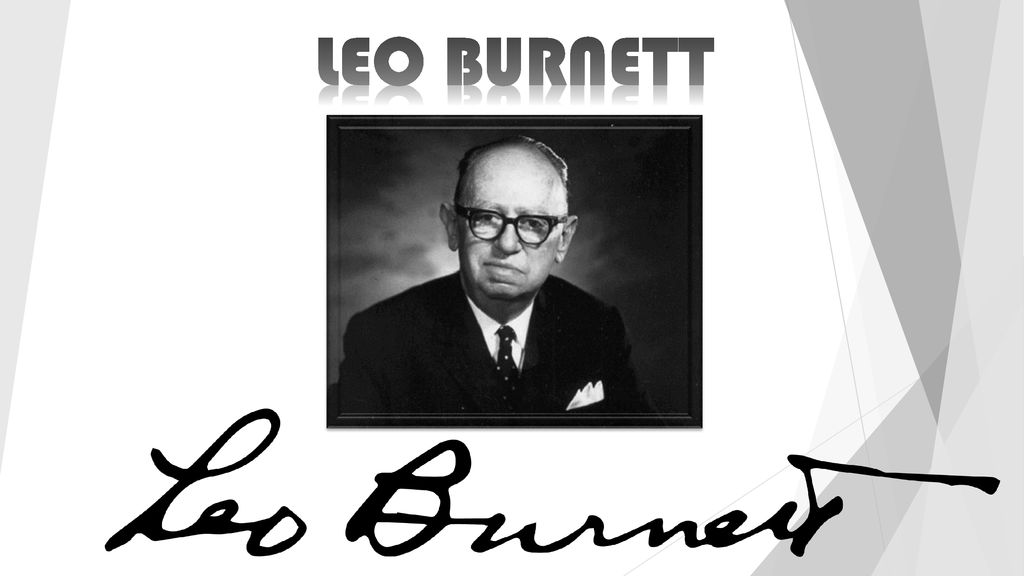A Real Mad Man: Who is Leo Burnett?
Leo Burnett, one of the most recognized names in the advertising world, lived between 1891 and 1971. Born in Michigan, USA, Burnett studied journalism in the same state.

Burnett, who has been a reporter for many years, started his advertising career by working at different advertising agencies. In 1935, he founded his own agency.
Although it was thought that the agency he founded after the Great Depression in 1929 would not survive for a long time, the agency grew rapidly thanks to its approach to advertising and successful advertising campaigns.
Leo Burnett was listed among the 100 most influential people of the 20th century by Time magazine.
Burnett, one of the most influential names in the development and change of advertising, has maintained the principle of 'producing the best advertising in the world' in all his works.
Leo Burnett (October 21, 1891 – June 7, 1971) was an American advertising executive and the founder of Leo Burnett Company, Inc. He was responsible for creating some of advertising's most well-known characters and campaigns of the 20th century, including Tony the Tiger, the Marlboro Man, the Maytag Repairman, United's "Fly the Friendly Skies", and Allstate's "Good Hands", and for garnering relationships with multinational clients such as McDonald's, Hallmark and Coca-Cola. In 1999, Burnett was named by Time as one of the 100 most influential people of the 20th century.
Burnett, who welcomed his first visitors with a bowl of apples at the agency's reception, founded the agency in Chicago with 3 employees and 3 clients, and today has more than 80 branches all over the world. And the tradition of apples in bowls still continues.
Having created unforgettable icons for many brands such as Marlboro Man, Jolly Green Giant, Starkist Tuna, Tony the Tiger and Pillsbury Doughboy, Burnett's customers include major brands such as McDonald's, Samsung, Heinz, Hallmark and Procter and Gamble, as well as Philip Morris. has received.
The advertising school that Burnett founded in Chicago to prepare talented people for the industry added a new dimension to advertising.
Leo Burnett has not only been the name of the agency since his time but also the definition of a perspective and approach.
Burnett's advertising approach focuses on reflecting the main message without being pretentious and complex, and on being warm and sincere without being emotional.
Life story
We first know Leo Burnett from those famous Marlboro commercials in which he worked with Philip Morris. Burnett laid the foundations of his advertising career with the advertising company he founded in 1935 by borrowing 50 thousand dollars. He did important work in copywriting, advertising visuals, and many other fields, and was also one of the first names to try to understand customer behavior.
Leo Burnett was born in Michigan and studied Journalism at the University of Michigan. Burnett, who started his career as an editor and reporter in the school newspaper, achieved significant success when he started advertising for the Cadillac Motor Company. Following this success, he quickly rose in his advertising career by working with Lafayette Motor and Homer McKee agencies. In those years, with the help of his friend, Burnett made agreements with many companies, made a profit of $900 thousand in that year, and managed to establish one of the advertising agencies that did the most business in a short time.
Later, following this success, Burnett founded an advertising school in Chicago and began providing training in different styles. Only talented people were trained at the school and prepared for the advertising industry. Lessons were given here, especially on advertising copywriting and creativity. Burnett was the founder of the movement that defends the thesis that 'creativity is connecting two things you know in a way you don't know', which is taught in most copywriting courses today. In fact, if we look at the success of its own advertisements, it is not difficult to understand that this success comes from simplicity. The important thing, says Burnett, is, first of all, to understand the target audience and customer. If you understand them, you will be better able to decide which words to choose when writing.
Burnett stands against those who argue that advertising consists of unknown, absurd words or images that appear suddenly. He argues that it should be emphasized how many different ways known things can be said. Because your target is the public. If you give them something they don't understand, something they haven't known before, you won't be able to survive. It becomes difficult to explain what you want to sell.
Another thesis of Leo Burnett is to stay warm with people without exploiting their emotions. In this sense, it is known for being far from simplicity and ostentation. In other words, his real stance is against the world order that is obsessed with celebrities and perfect women. That's why he prefers normal and ordinary people in his advertisements. His structure points out that it is not the celebrity who sells the ad, and that the real advertiser will get rewarded for his mental exhaustion.
